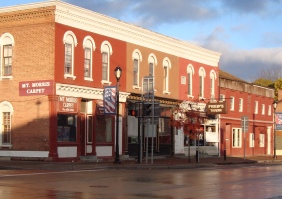Over the next few months, DCI will be featuring a short profile on various Colorado partner organizations and agencies that can help support you in your community revitalization work.
Colorado Rural Development Council (CRDC) is a partnership committed to advancing rural interests identified by listening to the needs of rural people. We encourage and assist locally defined community development by fostering creative partnerships, knowledge, communications and resources to effectively implement the Community’s own visions.
CRDC was formed in 1993 by Dr. Florine Raitano, former mayor of Dillon, Colorado, to address the needs of rural communities in our state. One early focus of our efforts was the availability of telecommunications choices in rural areas. Our state’s rural communities have seen a marked improvement in data/voice access since the mid 1990s.
Since that time the CRDC has become the dedicated voice of rural Colorado. Our friends and partners are in all walks of life and in communities of all sizes, from Colorado’s backroads to Washington D.C.
CRDC is one of 33 federally recognized State Rural Development Councils (SRDCs) that belong to the National Rural Development Partnership, created by executive order by President George H.W. Bush in 1990.
Over the years, significant and crucial funding for CRDC projects and products has been provided by grants, awarded on a competitive basis, from the United States Department of Agriculture Rural Development office. The USDA Rural Development organization, and the dedicated people that staff it, have been valuable partners and valued friends these many years.
CRDC accepts funding from the entire spectrum of public and the private sector entities, and we offer our investors and sponsors a unique opportunity to make a real difference in rural communities. (If your corporation or organization desires increased visibility in rural areas, and wants to support measurable positive impact on rural residents and economies, please contact Michelle Alcott at 303-934-9117 or malcott@ruralcolorado.org.)
The future of the CRDC is just as imperiled as the other resources available to Colorado’s rural communities. A number of the state rural development councils have closed their doors due to budget shortfalls and funding cuts. We are in a lean period today, but opportunities to fulfill our mission still arise and give us purpose.
We have learned this:
- Times have been tough before, and probably will be again.
- The important thing is how we conduct ourselves during the tough times, and during the good times.
- Our mission is the same, no matter the economic conditions.
We will all survive, a little stronger and smarter, to see the next cycle of opportunity.
Check out more information on CRDC and the 5th Annual Colorado Entrepreneurship Marketplace, which will be held in Pueblo in October 2012, by visiting www.ruralcolorado.org.


